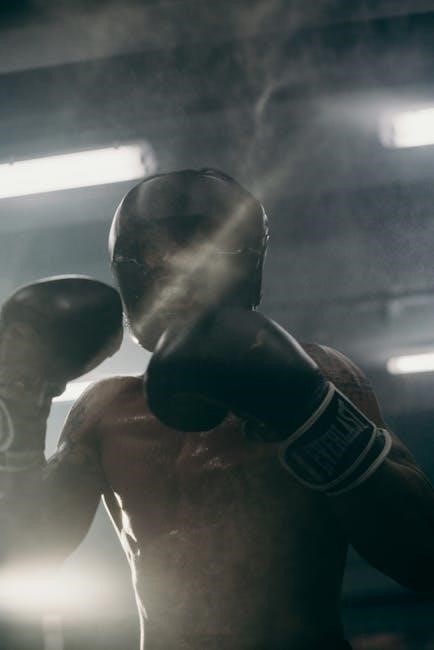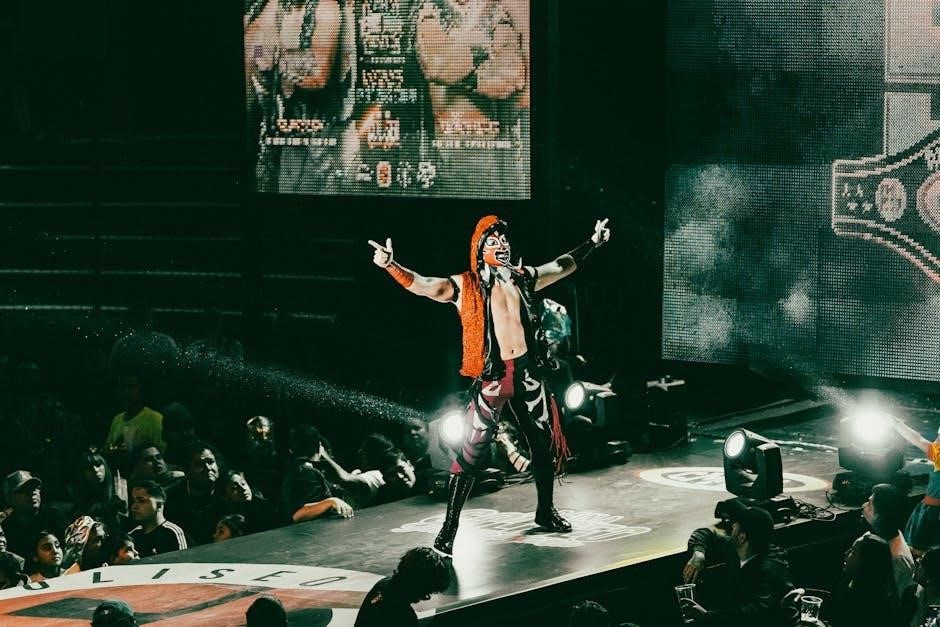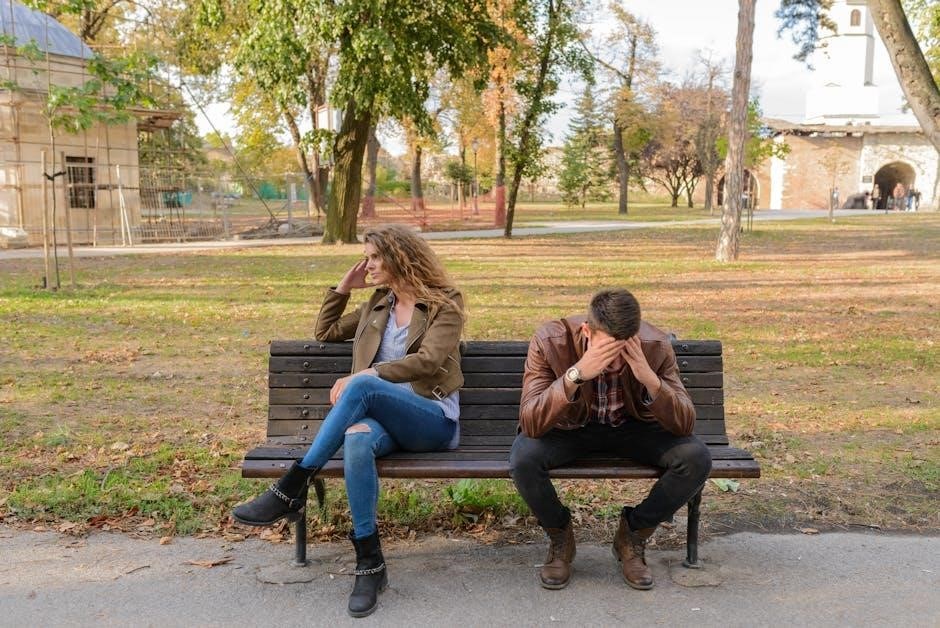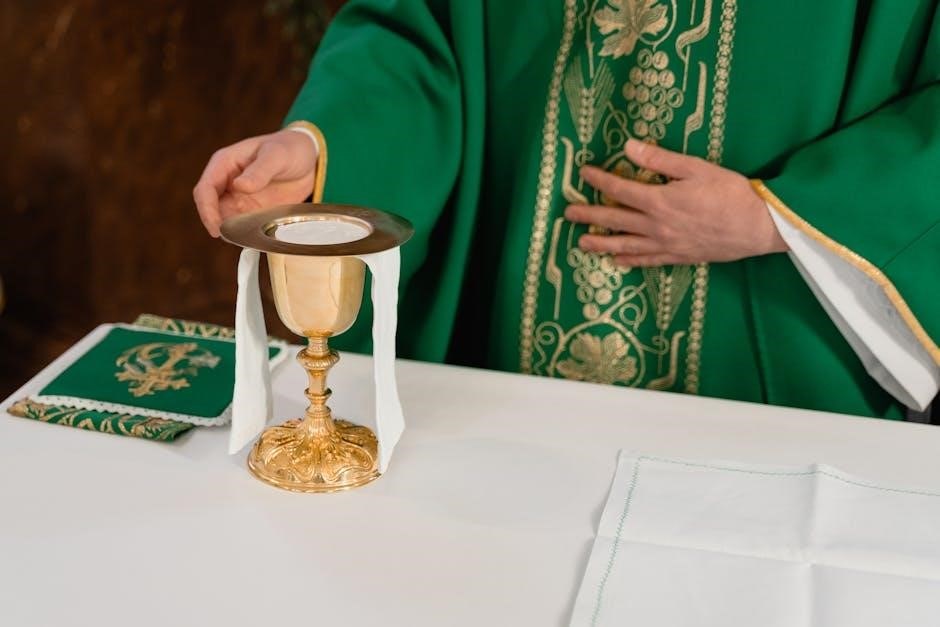Overview of “The Ones Who Stay and Fight”
N․K․ Jemisin’s “The Ones Who Stay and Fight” is a short story found in her collection, “How Long ’til Black Future Month?” It explores themes of utopia, community, and the difficult choices involved in fighting for a better world․

N․K․ Jemisin’s “The Ones Who Stay and Fight” as a Response to Ursula K; Le Guin
Jemisin’s story is a direct response to Ursula K․ Le Guin’s “The Ones Who Walk Away from Omelas․” It challenges the idea that a perfect society must rely on the suffering of a single individual․
The Ones Who Walk Away from Omelas as a Foundation
Ursula K․ Le Guin’s “The Ones Who Walk Away from Omelas” presents a seemingly utopian city where prosperity depends on the perpetual suffering of a child․ The story explores the moral implications of this sacrifice, forcing readers to consider the price of happiness and the ethics of collective benefit at the expense of individual pain․ It poses a fundamental question about the nature of utopia and the justification of injustice․ The story serves as a critical foundation for Jemisin’s work, establishing a framework for examining alternative responses to inherent societal problems․ Le Guin’s narrative challenges readers to confront uncomfortable truths about societal trade-offs․
Jemisin’s Rebuttal to Le Guin’s Utopia
N․K․ Jemisin’s “The Ones Who Stay and Fight” directly responds to Le Guin’s “Omelas” by presenting an alternative: a society that chooses to confront injustice and oppression head-on, rather than accepting it as a necessary evil․ Jemisin’s story offers a counter-narrative to the idea that utopia must be built on someone’s suffering․ Instead, it explores the possibility of a community actively engaged in fighting for a better world, even if that fight is messy and imperfect․ Um-Helat, the city in Jemisin’s story, embodies this active resistance, choosing collective action and continuous struggle over passive acceptance․ This active resistance is a direct challenge to the complacency implied in “Omelas․”
Themes Explored in “The Ones Who Stay and Fight”
The story delves into community, collective responsibility, and the active fight against oppression․ It examines how societies can choose to confront injustice rather than ignore it for the sake of comfort․
Community and Collective Responsibility
“The Ones Who Stay and Fight” places significant emphasis on community․ It shows a society, Um-Helat, actively choosing collective responsibility over individual ease․ Citizens are deeply connected, demonstrating a willingness to support and nurture each other․ This communal spirit extends to protecting the vulnerable and confronting external threats․ The narrative explores how shared values and mutual support can form the foundation of a resilient and just society․ The story contrasts sharply with narratives where individual gain overshadows the well-being of the community․ Jemisin highlights the strength and potential found when people unite for common goals, fostering a society built on empathy, care, and shared burdens․ The importance of social workers highlights this․
Fighting Oppression and Injustice
The narrative explores the active fight against oppression and injustice․ Um-Helat faces external threats, and its citizens choose to stand and defend their ideals․ The story underscores the necessity of confronting oppressive forces rather than passively accepting them․ This active resistance is portrayed as vital for maintaining a just society․ The text highlights the importance of fighting against oppressive ideals․ The social workers in Um-Helat embody this principle, extending support even to those who might pose a threat, striving to heal and nurture rather than punish․ Jemisin encourages readers to challenge oppressive systems, promoting a proactive approach to creating a more equitable world․

Afrofuturism and Utopian Visions
Jemisin’s story blends utopian ideals with Afrofuturism, reimagining a future where Black identity and culture are central to the vision of a perfect society․ It offers a unique perspective on utopian themes․
Incorporating Black Identity and Culture
“The Ones Who Stay and Fight” distinguishes itself by embedding Black identity and culture into the very fabric of its utopian vision․ Unlike traditional utopian narratives that often erase or homogenize cultural differences, Jemisin’s story celebrates the richness and complexity of Black experiences․ The city of Um-Helat, with its Day of Good Birds and its sympathetic social workers, reflects a society where Black lives and perspectives are not only acknowledged but are also central to the community’s values and structures․ This incorporation serves as a powerful statement, challenging the historical exclusion of Black voices from utopian imaginings and offering a compelling vision of a future where Black culture thrives and shapes the world․
Reimagining Utopia Through an Afrofuturist Lens
Through an Afrofuturist lens, “The Ones Who Stay and Fight” reimagines utopia by centering Black experiences and perspectives․ Jemisin moves beyond conventional utopian ideals, creating a society that actively confronts oppression and injustice․ This Afrofuturist approach allows for the exploration of themes like community, collective responsibility, and fighting for a better world․ The story doesn’t shy away from acknowledging challenges, instead presenting a utopia that is constantly evolving and adapting․ This reimagining challenges traditional utopian narratives, creating a space where Black culture and identity shape a more equitable and just future․ Ultimately, Jemisin’s vision offers a compelling alternative to traditional utopian concepts․
Analysis of Characters and Setting
An analysis of “The Ones Who Stay and Fight” delves into the city of Um-Helat and its unique social structure․ Characters, especially social workers, play pivotal roles in shaping the narrative’s exploration of utopian ideals․
The City of Um-Helat
Um-Helat, the setting of Jemisin’s story, is a vibrant and intentionally constructed utopia․ Unlike traditional utopian visions, Um-Helat embraces conflict and actively prepares its citizens to defend their ideals․ The city’s customs, such as the Day of Good Birds, showcase its unique blend of whimsy and purpose․ This seemingly random celebration, filled with brightly dyed silks and copperwire drones, highlights the city’s commitment to both joy and technological advancement․
Um-Helat is a place where aspirations can be fulfilled, but also a place where the constant threat of external hostility shapes its social fabric․ The city’s physical and social architecture reflects a deliberate choice to confront challenges rather than ignore them, fostering a sense of collective responsibility among its inhabitants․
Social Workers and Their Role
In Um-Helat, social workers play a crucial role in maintaining the delicate balance between utopian ideals and the realities of external threats․ They are not simply administrators but active participants in the city’s defense and the well-being of its citizens․ Their garb signifies their commitment, and their actions demonstrate a profound dedication to their purpose․
When faced with potentially harmful situations, such as a young daughter vowing revenge, the social workers respond with empathy and understanding rather than punishment․ They extend a sympathetic hand, embodying the city’s principle of fighting oppression not with further oppression, but with compassion and support․ This approach exemplifies Um-Helat’s commitment to nurturing its citizens and upholding its utopian values even in the face of adversity․

Critical Reception and Interpretation
“The Ones Who Stay and Fight” has garnered attention for its Afrofuturist themes and its response to Le Guin․ Scholarly analysis explores its utopian vision and its social commentary․
Literary Significance
N․K․ Jemisin’s “The Ones Who Stay and Fight” holds literary significance as a modern response to utopian narratives, particularly Ursula K․ Le Guin’s “The Ones Who Walk Away from Omelas․” It reimagines the concept of utopia through an Afrofuturist lens, incorporating themes of Black identity and resistance․ The story challenges readers to consider the complexities of creating and maintaining a just society, questioning whether true utopia is possible without constant vigilance and a willingness to fight against oppression․ Jemisin’s work contributes to the ongoing conversation about utopian ideals, offering a nuanced perspective that acknowledges the necessity of struggle and collective responsibility in the pursuit of a better world․
Scholarly Analysis and Discussions
“The Ones Who Stay and Fight” has garnered scholarly attention for its complex engagement with utopian and dystopian themes, as well as its Afrofuturist elements․ Analyses often focus on Jemisin’s rebuttal to Le Guin’s “Omelas,” examining how she reframes the ethical dilemma of individual happiness versus collective suffering․ Discussions explore the story’s portrayal of community, collective responsibility, and the necessity of fighting against oppression and injustice․ Scholarly interpretations also delve into the significance of the city of Um-Helat as a reimagined utopia, analyzing the role of social workers and the incorporation of Black identity and culture within the narrative․ The story prompts critical conversations about the challenges of achieving true social justice․

Availability of “The Ones Who Stay and Fight” PDF
Finding a direct PDF of “The Ones Who Stay and Fight” may require searching online libraries or academic databases․ Check for publicly available versions shared by educational institutions or fan communities․
Where to Find the Story Online
Locating “The Ones Who Stay and Fight” online often involves exploring various digital avenues․ Start by checking online libraries such as Project Gutenberg or Internet Archive, though availability may vary․ Academic databases like JSTOR or ProQuest might offer access through institutional subscriptions․ Fan forums and online literary communities sometimes share copies, but exercise caution regarding copyright․
Consider searching for online excerpts or readings of the story, which can provide a taste of the narrative․ Remember to respect copyright laws and support the author by purchasing the collection “How Long ’til Black Future Month?” if possible․ Checking N․K․ Jemisin’s official website or publisher’s website (Orbit Books) is also advisable for legitimate sources or excerpts․


